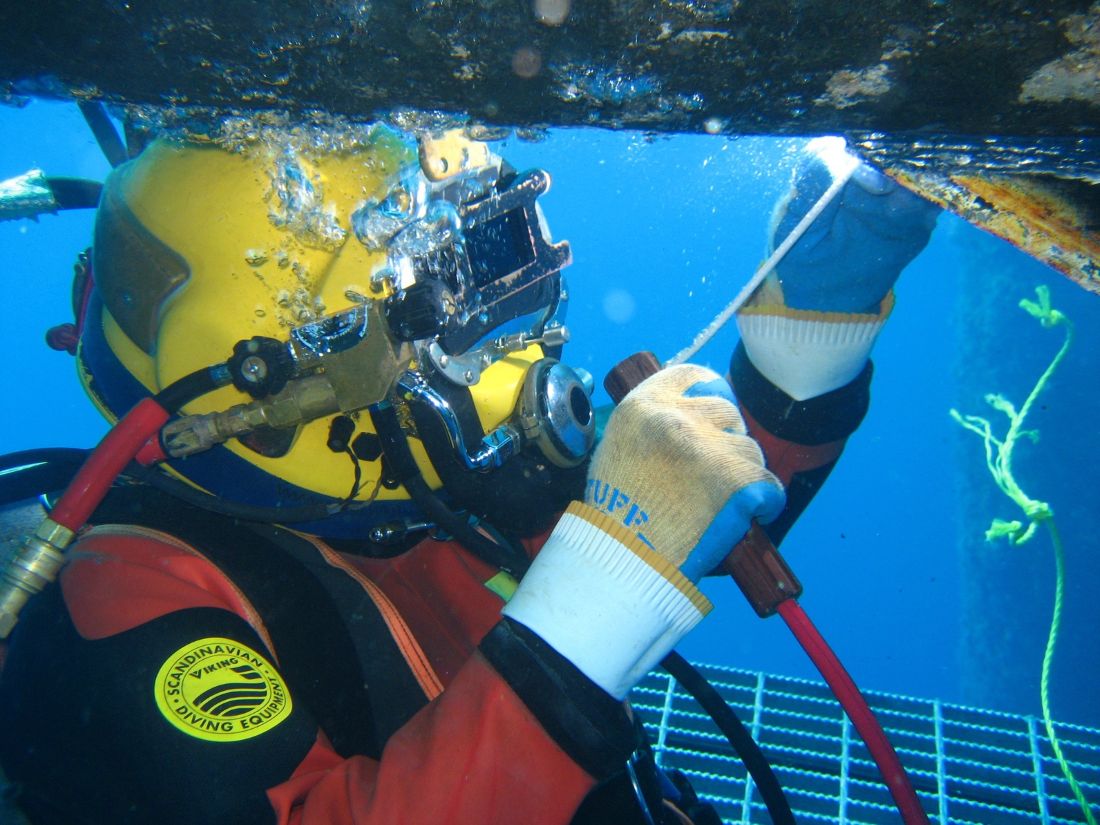Embarking on a career as a saturation diver opens the door to a world of deep-sea exploration and underwater challenges that few professions can offer. This specialized field, integral to industries like underwater construction and oil and gas extraction, requires a unique blend of training, skill, and determination. Through comprehensive education and hands-on experience, aspiring divers can master the art of living and working in the depths, equipped with the knowledge to handle the complexities of saturation diving. If you’re intrigued by the prospect of a career that combines adventure, technical expertise, and the opportunity to work in some of the most challenging environments on the planet, then saturation diving could be your calling.

Training to Be a Saturation Diver
Training to become a saturation diver requires a blend of rigorous education and hands-on experience. Aspiring divers must first undergo basic commercial diving training before advancing to specialized saturation diving courses, where they learn about the technicalities of extended underwater living and the operation of complex diving equipment. These programs also emphasize safety procedures, emergency response skills, and hyperbaric welding, ensuring divers are well-equipped to handle the demanding conditions of deep-sea environments. Upon completion, candidates must obtain certification, which serves as a testament to their expertise and readiness to embark on challenging underwater missions.
Commercial Divers International stands out as the premier commercial diving school, specifically run by and for commercial divers. Our program is quick to complete and leaves graduates fully prepared to embark on an underwater welding career.
How Does Saturation Diving Work?
Saturation diving is a specialized technique that allows divers to work at great depths for extended periods by eliminating the need for daily decompression. Divers live in a pressurized environment on the surface or at depth in a saturation system, which matches the pressure of the deep waters they work in. This method enables them to dive repeatedly to significant depths without undergoing the time-consuming decompression process after each dive. The process involves the use of a diving bell to transport divers from their living quarters to the work site, ensuring their body’s pressure remains constant, minimizing the risk of decompression sickness.
Choosing the Right Educational Path
Choosing the right educational path for saturation diving involves selecting a school that offers accredited programs, experienced instructors, and hands-on training with the latest diving technologies.
Best Paying Commercial Diving Careers
In the realm of commercial diving, saturation diving stands out due to its complexity and depth, but it’s just one of the many lucrative pathways in this diverse field. Hazmat diving is another highly specialized and well-compensated area, where divers work in hazardous materials environments, requiring stringent safety protocols and comprehensive training to manage risks associated with contaminants. Inland diving offers a different set of opportunities and challenges, focusing on underwater tasks in lakes, rivers, and reservoirs, often involving infrastructure inspection, repair, and construction, showcasing the varied and rewarding career paths within commercial diving.
Life of a Saturation Diver
The life of a saturation diver is marked by extraordinary experiences and demanding challenges, as they embark on deep-sea missions that require living in pressurized environments for extended periods. This unique career involves working in remote underwater locations, where teamwork, resilience, and precision are paramount, often leading to a strong sense of camaraderie among crew members. Despite the rigorous demands, the life of a saturation diver is rewarding, offering unmatched adventures, the satisfaction of overcoming difficult tasks, and the opportunity to contribute significantly to industries like oil and gas extraction and underwater construction.
People Also Ask:
- What is Saturation Diving?
- Saturation diving is a technique that allows divers to work at great depths for extended periods by living in a pressurized environment.
- Training Required to Become a Saturation Diver
- Becoming a saturation diver requires completing basic commercial diving training, followed by specialized courses that focus on extended underwater living, operating complex diving equipment, and mastering safety procedures and emergency response skills.
- How Long is Saturation Diver Training?
- The duration of training to become a saturation diver varies, but it generally includes several months of basic commercial diving education, followed by advanced saturation diving courses.
Saturation Diver Career Training
Becoming a saturation diver offers an adventurous and fulfilling career path, packed with unique challenges and rewarding experiences in various industries. If you’re drawn to the depths of the sea and ready to embark on a career that pushes the boundaries of conventional diving, then saturation diving might be the perfect fit for you. Take the plunge and explore (for free) the opportunities available at Commercial Divers International, where expert training and comprehensive programs await to kickstart your journey in the world of professional diving.
